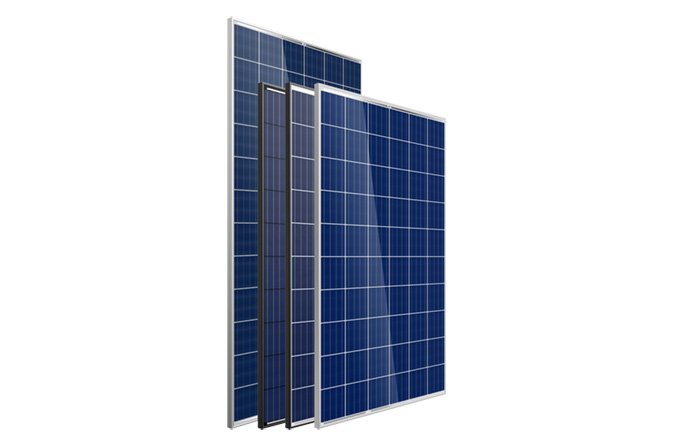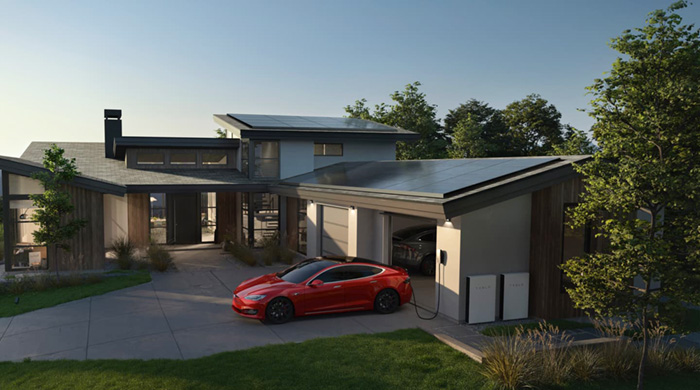My Solar Quotes has developed this guide specifically for New Zealand architects. Everything architects and draftsmen need to know about solar power can be found below. We aim to bridge the connection between new home builds and solar power systems.
Solar Panel Positioning
Understanding the best position for the solar panels may be useful for a few different reasons; your client might want them on the home renderings or drawings to visualise where they will go before finalising the design, to avoid roof structures from getting in the way of solar panels when designing the home, among many other possible reasons.
To determine the best position and layout of solar panels, solar installation designers (or engineers) can make a professional recommendation. A client doesn’t have to adhere to the designer’s recommendations. If a client has a visual preference it can always be considered, so long as the panels are positioned within the manufacturer’s specifications. Deviating from the solar designer’s recommendation may lead to a loss in power production, which is fine – but the client should be aware of the percentage of power loss from shifting panels around.
The most favourable solar panel position for a grid-connected system is typically north-facing (on a 25-degree slope in the North Island, and 30 degrees in the South Island). This configuration may not suit all households, for example, a family that uses more power in the morning could benefit from solar panels on an east-facing roof.
If it is a flat roof, the solar installers will almost always recommend tilting the panels to at least 10 degrees, so the panels can self-clean in the rain. But there is the odd exception and technically solar panels can be installed flat.

For an off-grid solar power system, the optimal angle for solar panels is 45 degrees to capture more sunlight during the winter.
Make sure there is ample roof space around the solar panel array, the panels normally need to be at least 200mm from the edge of the roof. Solar panel installers need this gap for accessibility, and to avoid wind loading issues.
The Size Of Solar Panels
When drawing a visual representation of solar panels for a client, you need to know the dimensions of standard solar panels.
Common solar panels in New Zealand have roughly these dimensions: 1650 x 990 x 38 mm.
Allow for at least 18mm in between panels.
If a client knows which solar panels they would like to have installed, ask for a datasheet for the specific brand and model. These sheets have the dimensions on them.
Does The Roof Need Strengthening To Accommodate The Weight Of Solar Panels?
So long as the roof is built to New Zealand’s building codes, no extra roof strengthening will be required, even if the roof material is heavy concrete tiles.
How to Make The Solar Array Look Good
Some people think solar panels are an eyesore. However many renewable energy enthusiasts think they complement a house. But since they are definitely not designed to look like art installations, I have a few ideas to ensure panels don’t look become an eyesore.
- Design the roof to accommodate a neat rectangle of solar panels. Consider designing the house with one or two large roof surface areas with minimal hips and small gables. If there are too many roof surfaces, the solar panels will need to be scattered across the roof, which won’t look as visually appealing.
- If your client wants a chimney, gas flue, air conditioning vent or skylights, consider where these will be positioned on the roof, and whether they might get in the way of solar panel rows. Solar designers will place panels a distance away from extruding objects to avoid shade on the panels. A small amount of shade can have a big effect on the performance of the system.

Solar Panel Colours
Only a limited range of solar panel colours are currently available in New Zealand. Most solar installation companies generally only carry one or two models. But the variations found in New Zealand are as follows; blue or black solar cells, white, black or clear background board behind the solar cells, and either uncoated aluminium or coated black solar frames.

Building-Integrated Solar Photovoltaics (BIPV)
There are solar products on the market that can serve as building materials such as glass or roof tiles with solar cells built into them. Check out the solar BIPV options here.
A product that can give a building a more integrated look are ‘Glass on Glass, Frameless Solar Panels’, though they are not specifically classed as BIPV panels. These solar panels allow for sunlight to come through and around the solar cells. They can look great in applications, such as shade canopies and carports. They are slightly more expensive than standard solar panels, and additional framing materials may be required, depending on the application.


Tesla Solar Roof
If a client would like a visually stunning roof with integrated solar, then the Tesla Solar Roof Tiles would likely be the top pick. Unfortunately, they are not in New Zealand just yet, and chances are they won’t be here for a few years. As Elon Musk has stated, demand is going to be much higher than supply for some time, which means supply would likely be limited to the United States - until production ramps up and Tesla releases a version that meets Australian and New Zealand electrical standards.

How to get started
You can apply for 3 free quotes on behalf of your client in our quote request form, just make sure you choose your clients address and let us know that you are enquiring on behalf (in the comments section). My Solar Quotes will then find 3 solar companies that operate in your client’s area, and you’ll receive 3 free solar power quotes.



Post your own comment